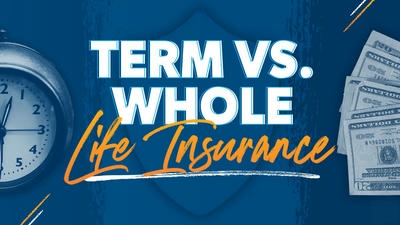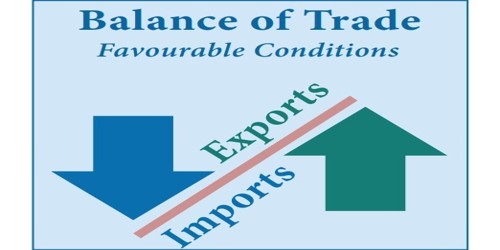
The vacation rental market, popularized by platforms like Airbnb and Vrbo, has been a lucrative investment opportunity for real estate investors seeking passive income and property appreciation. However, the post-pandemic world of 2025 presents a transformed landscape for vacation rentals, shaped by shifting travel behaviors, economic conditions, and regulatory changes. With interest rates at 5.5 to 6 percent, inflation moderating to 3 percent, and hybrid work models driving demand for short-term stays, investors are questioning whether vacation rentals remain a sound investment.
The Vacation Rental Market in 2025
As of May 21, 2025, the vacation rental industry is rebounding from pandemic-era disruptions but faces new challenges and opportunities. The global vacation rental market is projected to reach 100 billion dollars by 2026, growing at 10 percent annually, according to industry reports. In the U.S., popular destinations like Orlando, Asheville, and the Smoky Mountains see occupancy rates of 60 to 75 percent, with average daily rates (ADRs) ranging from 150 to 300 dollars. However, rising interest rates, local regulations, and competition are reshaping profitability.
The post-pandemic world has altered traveler preferences. Hybrid work and “work-from-anywhere” trends have boosted demand for longer stays (7 to 30 days), while domestic and drivable destinations remain popular due to cost-conscious consumers. Social media discussions on platforms like X highlight strong interest in unique vacation rentals, such as eco-friendly cabins or pet-friendly homes, but also note concerns about oversupply in some markets. Below, we analyze the pros, cons, and strategies for investing in vacation rentals in this evolving environment.
Pros of Investing in Vacation Rentals in 2025

Vacation rentals offer several advantages for investors, particularly in a post-pandemic world where flexibility and lifestyle drive demand.
1. High Income Potential
Vacation rentals typically generate higher rental income than long-term leases. In 2025, a well-managed property in a popular destination like Gatlinburg, Tennessee, can yield 40000 to 80000 dollars annually, compared to 18000 to 24000 dollars for a traditional rental. ADRs for short-term rentals average 20 to 30 percent higher than long-term rates in similar markets.
Example: A 3-bedroom cabin purchased for 400000 dollars with a 20 percent down payment generates 50000 dollars annually at 70 percent occupancy and a 200-dollar ADR, covering mortgage payments and yielding 8 to 10 percent cash-on-cash return.
2. Flexibility for Personal Use
Unlike long-term rentals, vacation rentals allow owners to reserve their property for personal use during off-peak seasons. In 2025, with hybrid work enabling extended stays, investors can enjoy their property while still earning income during high-demand periods like summer or holidays.
3. Diversification of Income Streams
Vacation rentals diversify your real estate portfolio by tapping into the tourism and leisure market. In 2025, domestic travel remains strong, with 80 percent of U.S. travelers opting for drivable destinations, according to travel data. This resilience supports consistent demand in markets like the Florida Keys or Lake Tahoe.
4. Potential for Appreciation
Properties in desirable vacation destinations often appreciate faster than urban or suburban homes. In 2025, markets like Asheville (5 percent annual price growth) and Sedona, Arizona (4 percent growth), benefit from tourism and remote work trends, offering both income and capital gains.
5. Tax Benefits
Vacation rental owners can deduct expenses like mortgage interest, property taxes, maintenance, and marketing costs. In 2025, the IRS allows depreciation of the property’s value over 27.5 years, reducing taxable income. Owners using their property for fewer than 14 days annually can classify it as a business, maximizing deductions.
Cons of Investing in Vacation Rentals in 2025
Despite their appeal, vacation rentals come with significant challenges that can impact profitability and require active management.
1. High Operating Costs
Vacation rentals have higher operating costs than long-term rentals due to cleaning, maintenance, and furnishing expenses. In 2025, cleaning fees average 50 to 100 dollars per stay, while utilities and property management fees (10 to 25 percent of revenue) add up. A 50000-dollar annual income property might incur 15000 to 20000 dollars in costs.
2. Regulatory Restrictions
Many cities have tightened regulations on short-term rentals to address housing shortages and noise complaints. In 2025, destinations like San Francisco, New York, and Miami impose strict permitting, occupancy limits, or outright bans. Investors must research local laws, as non-compliance can lead to fines or loss of rental income.
3. Market Saturation
Popular vacation markets like Orlando or Myrtle Beach face oversupply, with thousands of listings competing on Airbnb and Vrbo. In 2025, oversaturated markets see lower occupancy rates (50 to 60 percent) and pressure on ADRs, reducing profitability. X posts from hosts in these areas note increased competition and the need for unique amenities to stand out.
4. Economic Sensitivity
Vacation rentals are sensitive to economic downturns, as travel is often a discretionary expense. In 2025, with fears of a mild recession, cost-conscious consumers may cut back on vacations, impacting occupancy and revenue. Markets reliant on luxury travelers, like Aspen, are particularly vulnerable.
5. Active Management Requirements
Unlike long-term rentals, vacation rentals require hands-on management, including guest communication, booking coordination, and maintenance. In 2025, professional management services are common but costly, eating into profits. Self-managing owners must invest significant time, which may not suit passive investors.
Strategies for Investing in Vacation Rentals in 2025

To maximize returns and mitigate risks, consider these strategies tailored to the post-pandemic market.
1. Choose the Right Market
Select destinations with strong tourism demand, low regulatory barriers, and growth potential. In 2025, mid-sized markets like Boise, Idaho, and Bend, Oregon, offer high occupancy (65 to 75 percent) and ADRs (150 to 250 dollars) with fewer restrictions than urban centers.
Research: Use tools like AirDNA or Mashvisor to analyze occupancy rates, ADRs, and revenue potential. Check local zoning laws on city websites or consult a real estate agent.
Focus: Prioritize drivable destinations within 3 to 5 hours of major metros, as domestic travel dominates.
2. Differentiate Your Property
Stand out in competitive markets by offering unique amenities that align with 2025 traveler preferences. X posts highlight demand for pet-friendly homes, eco-friendly features (e.g., solar panels), and work-from-home setups (e.g., high-speed Wi-Fi, dedicated desks).
Upgrades: Invest in hot tubs, outdoor spaces, or smart home technology to boost bookings. A 10000-dollar investment in a hot tub can increase annual revenue by 15 percent.
Marketing: Use professional photography and compelling listings on Airbnb, Vrbo, and Booking.com to attract guests.
3. Optimize Pricing and Occupancy
Dynamic pricing maximizes revenue by adjusting rates based on demand, seasonality, and local events. In 2025, tools like PriceLabs or Beyond Pricing use AI to optimize rates, increasing revenue by 10 to 20 percent.
Action: Set base rates 10 percent below market averages to boost occupancy, then use dynamic pricing to capture peak-season premiums. Offer discounts for longer stays (7+ days) to tap into remote work trends.
4. Leverage Financing Strategically
With interest rates at 6 percent, securing favorable financing is critical. In 2025, consider:
Conventional Loans: Require 20 to 25 percent down for investment properties but offer lower rates (6 to 6.5 percent).
FHA Loans: Allow 3.5 percent down for owner-occupied vacation rentals (if you live in the property part-time).
HELOCs: Use home equity from your primary residence to fund down payments at 8 to 9 percent interest.
Action: Work with a mortgage broker to compare options. Ensure rental income covers loan payments and operating costs.
5. Mitigate Regulatory Risks
Research local regulations before buying. In 2025, markets like Asheville require short-term rental permits (500 to 1000 dollars annually), while others limit rental days. Engage a local attorney to navigate compliance and monitor regulatory updates on X or city websites.
6. Outsource Management for Efficiency
Hire a property management company to handle bookings, cleaning, and guest communication, especially if you’re not local. In 2025, firms like Vacasa or Evolve charge 10 to 25 percent of revenue but save time and improve guest ratings.
Action: Compare management fees and reviews on platforms like Hostfully. If self-managing, use tools like Guesty to automate tasks.
Case Study: Vacation Rental Investment in 2025
Consider Maria, a 45-year-old investor in Charlotte, North Carolina, with 100000 dollars for a vacation rental. She targets Boone, North Carolina, a drivable destination with strong tourism due to Appalachian State University and ski resorts. Maria purchases a 3-bedroom cabin for 400000 dollars, using a 20 percent down payment (80000 dollars) and a 320000-dollar mortgage at 6.5 percent (2200 dollars monthly).
She invests 20000 dollars in upgrades (hot tub, Wi-Fi, modern furnishings) and lists the property on Airbnb and Vrbo. Using dynamic pricing, she achieves a 70 percent occupancy rate at a 200-dollar ADR, generating 51000 dollars annually (255 nights x 200 dollars). After expenses—12000 dollars (management, cleaning, utilities), 6000 dollars (taxes, insurance), and 26400 dollars (mortgage)—her net income is 6600 dollars, a 6.6 percent cash-on-cash return. The property appreciates at 4 percent annually, adding 16000 dollars to its value.
Maria’s research, strategic upgrades, and professional management ensure profitability despite competition, positioning her for long-term wealth building.
Conclusion

Investing in vacation rentals in a post-pandemic world offers high income potential, flexibility, and diversification, but challenges like operating costs, regulations, and economic sensitivity require careful planning. In 2025, targeting growing markets, differentiating your property, and leveraging technology can maximize returns. While risks exist, a disciplined approach—backed by thorough research and strategic financing—makes vacation rentals a viable investment for those willing to navigate the complexities. As travel preferences evolve, vacation rentals remain a compelling way to build wealth in the dynamic real estate market.








